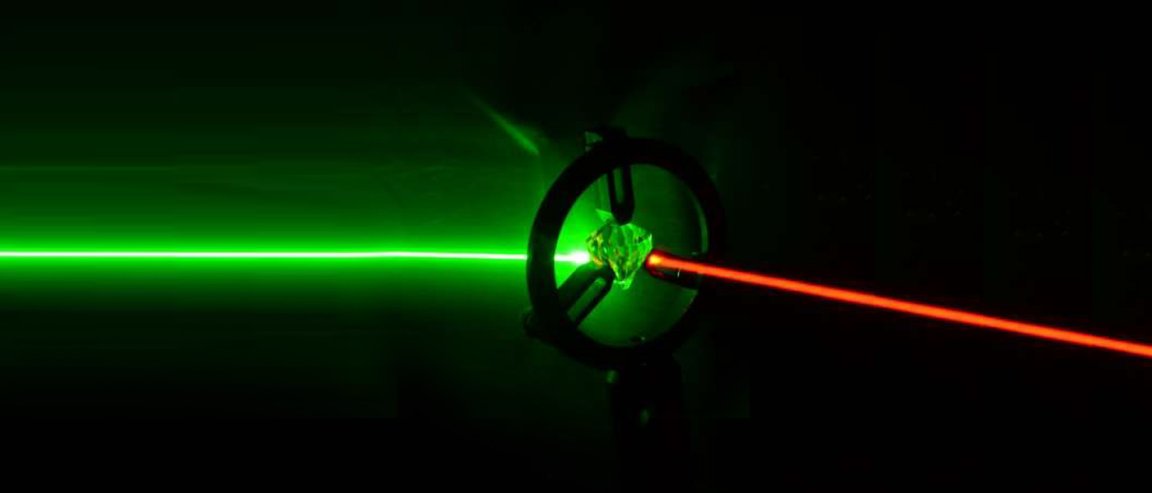
Beating the Clock…and More
Much of the current research in quantum computing focuses on one thing: stabilizing the quantum state. Quantum states are stabilized using either magnetism, immense cooling, or vacuums. The only other alternative is building quantum technologies that execute on ultrafast timescales so that operations can be completed before decoherence kicks in. But this leaves no time for manipulation or alteration, only measurement.
Researchers from Canada may just have changed that. A study published in Nature Communications details the first time ultrafast single photons have had their color and bandwidth changed using a room-temperature quantum memory in diamond.
The diamond quantum memory works by converting the photon into a particular vibration of the carbon atoms in the diamond, called a phonon. This conversion works for many different colors of light allowing for the manipulation of a broad spectrum of light.

The energy structure of diamond allows for this to occur at room temperature with very low noise. Researchers used strong laser pulses to store and retrieve the photon. By controlling the colors of these laser pulses, researchers controlled the color of the retrieved photon.
Benefits and Applications
The research demonstrated small frequency shifts that are useful for wavelength division multiplexing. This is used today when a sender needs to transmit large amounts of information; the signal is broken into smaller packets of slightly different frequencies and sent through together. The information is then organized at the other end based on those frequencies. This technique could also be used in building up a cluster state, whichhave multiple applications in quantum computing driven entirely by measurements.
“The fragility of quantum systems means that you are always working against the clock,” said Duncan England, researcher at the National Research Council of Canada . “The interesting step that we’ve shown here is that by using extremely short pulses of light, we are able to beat the clock and maintain quantum performance.”